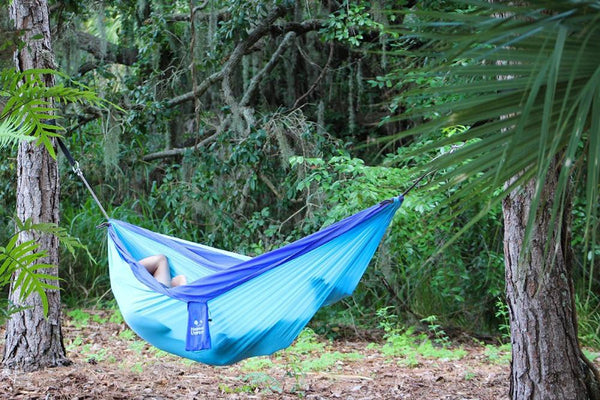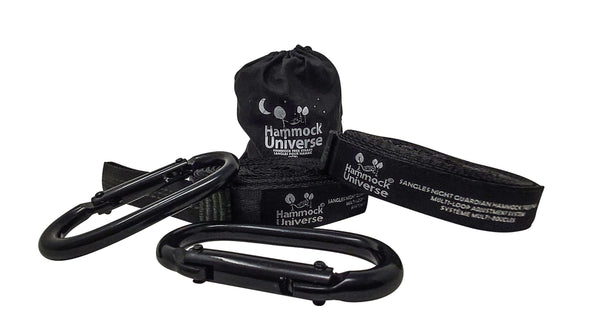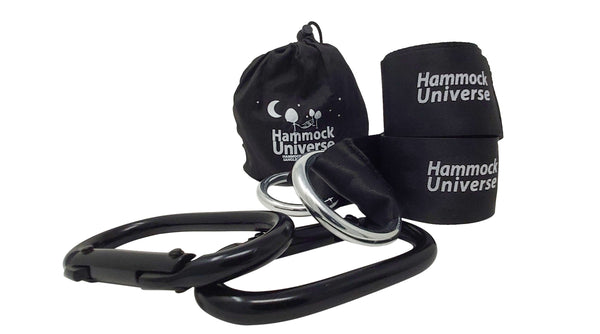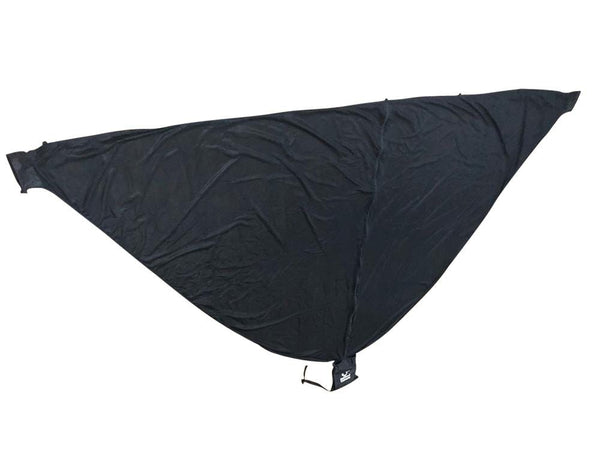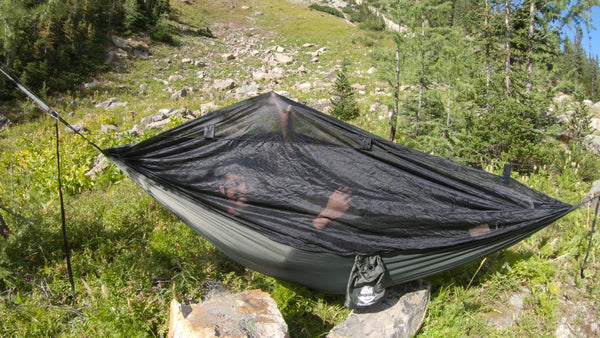FREE SHIPPING on most orders $25+ HAMMOCK BUYING GUIDE
Menu
-
-
Hammocks
-
Hammock Stands
-
Hammocks with Stands
-
Hanging Hammock Chairs
- View all Hammock Chairs
- Brazilian Style Hammock Chairs
- Colombian Hammock Chairs
- Mayan Hammock Chairs
- Mayan Hammock Chairs Deluxe
- Universal Hammock Chair Stand
- U Hammock Chair Stand
- Brazilian Hammock Chair with Universal Chair Stand
- Colombian Hammock Chair with Universal Chair Stand
- Mayan Hammock Chair with Universal Chair Stand
- Mayan Hammock Chair Deluxe with Universal Stand
-
Accessories
- Gift Cards
- Tools and Guides
- Bargain Bin
-
- 1-800-207-4761
- Login

FREE SHIPPING on most orders $25+ HAMMOCK BUYING GUIDE
How To Use Your Hammock in The Winter
December 07, 2021 4 min read
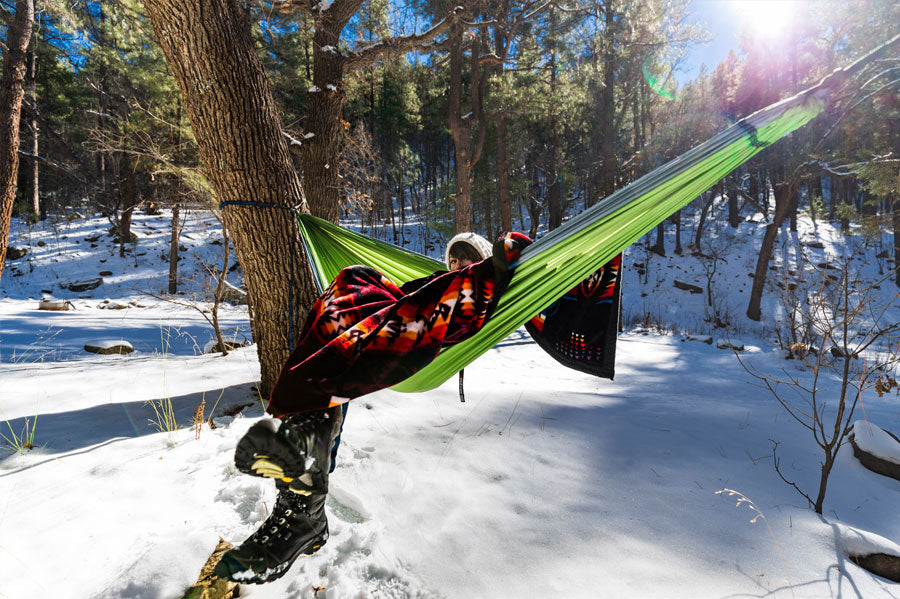
Four Tips for Winter Hammocking
Yes, we're serious, hammocks can be an all-season thing. Hammocking in the winter is not as bad as it sounds if you know how to prepare for it. Go ahead and think about it - which is better? Laying on the ground, on the snow, wondering if the wind will blow off your tent, or snuggle tucked in your hammock off the ground? Add the fact that heat rises to that and you've got yourself a pretty obvious equation. Hammocks keep you off the ground and away from the snow, allowing you to stay warm. Of course, just like with any other form of shelter while camping, a hammock itself won't be enough. There are a few things you have to pay attention to - the spot you want to hang your hammock in, the wind, tree branches that could fall off, etc. Check the forecast beforehand, layer your clothing and have a quality hammock. It can be a challenge, so here's everything you need to know before going hammocking in the winter.
Location, Location, Location
And we cannot stress this enough. It's not only about staying off the ground, it's about finding a place with a natural barrier that will help you deal with the winter wind. Think trees, hills, and rock formations. That being said, be careful of the nature around you. Take into consideration the amount of snow on the rocks and tree branches and don't expose yourself to danger by hanging your hammock near places that can harm you, -like old tree branches that can fall off because of the weight, or a place where ice can fall off. So, don't hang your hammock in the open, but be careful of potential hazards and accidents.
How Cold is Too Cold?
Well, it depends. You should definitely ease into it and maybe practice first in your backyard. With the right gear, the cold won't keep you away from your favourite outdoor activity, but don't hesitate to go back home if you don't feel warm enough. Use every possible solution for staying warm - from looking like a mummy to using the old water bottle trick.
How to stay warm?
This is crucial, of course. Keep in mind that winter hammocking comes with extra gear for a comfortable night.
Layered Clothing
The more layers, the better. Try avoiding cotton-based clothes and use insulating materials instead. Get yourself some underlayer clothes made of merino wool and choose a sweater and pants made of fleece or microfleece. Make sure you and your clothes are completely dry before getting into your hammock and don't forget gloves and a hat. Also, put your next day clothes inside the hammock as well, they'll be nice and warm in the morning but keep you warmer during the night. Also, you're preventing them from getting wet during the night.
Read more on how to stay warm
Sleeping Bag
This is something you can't really overlook In this situation, since they serve as insulation between you and your hammock. When opting for winter hammocking you might want to consider a mummy-style sleeping bag since it adjusts to your body and keeps you all covered. You can find these kinds of sleeping bags designed for low temperatures, so you can choose one that goes a few degrees lower than what you expect to encounter.
Pillow
You have to prevent all of your skin from pressing against the hammock fabric. That's why using a pillow will keep you even warmer. If you don't feel like carrying one, just roll up some clothes instead and use it as a pillow.
Underquilt/ Sleeping Pad
A Sleeping pad serves as an extra layer between you and the hammock. If you go for an inflatable sleeping pad, you will get extra heat. On the other hand, underquilts serve as extra insulation from the outdoors. Fit under quilts directly under your hammock and leave an air gap between your nylon hammock and the underquilt. The air gap is supposed to fill up with your body's heat and keep you more comfortable. An underquilt is something you can DIY by following these simple steps. You will only need a seam ripper, a sewing kit, a1.5-inch wide grosgrain ribbon, a 1/8-inch shock cord and two double packable down throws.
Use a Tarp
After taking all the precautions, maybe you won't need a tarp. However, it might come in handy if it's snowing or raining. They're also a great wind barrier, add an extra layer of protection, and trap heat. Make sure to place it as low as possible.
Learn how to choose the perfect tarp.
Hot Water Bottle
This is an old, simple trick that you can also use. They're great for preheating your hammock and for making you feel warmer. Use hard plastic or a metal water bottle and fill it with hot water, wrap it around a piece of clothing and keep it between your legs.
Invest in A Quality Hammock
This is a no-brainer. You can use all of the advice above, but without a proper, quality hammock it can all go to waste. Choose a waterproof hammock made of nylon, that is easy to carry but will also keep you nice and dry.
The Takeaway
Hammocking is an experience worth trying in each season. Even though winters in Canada are challenging, that doesn't mean you shouldn't give it a go and try hammocking in the winter. However, if you take one thing out of this article, make sure it's preparation. Check the weather report before heading out, keep an eye on your surroundings, invest in a quality hammock, and stay warm. Also, don't think there's shame in going back if you're not feeling warm enough, and don't underestimate the winter.
Safety First!
When using a hammock*, safety is paramount. Please make sure to follow these important guidelines when purchasing, installing and using a hammock
*(includes Hammock, Hammock Chair, Hammock Stand and Hammock Accessories)
Safety First!
When using a hammock*, safety is paramount. Please make sure to follow these important guidelines when purchasing, installing and using a hammock
*(includes Hammock, Hammock Chair, Hammock Stand and Hammock Accessories)
Related Products
Want to relax?
Join for exclusive content and promotions we only give to our email list!
